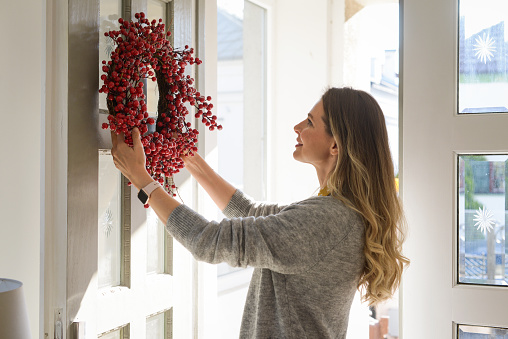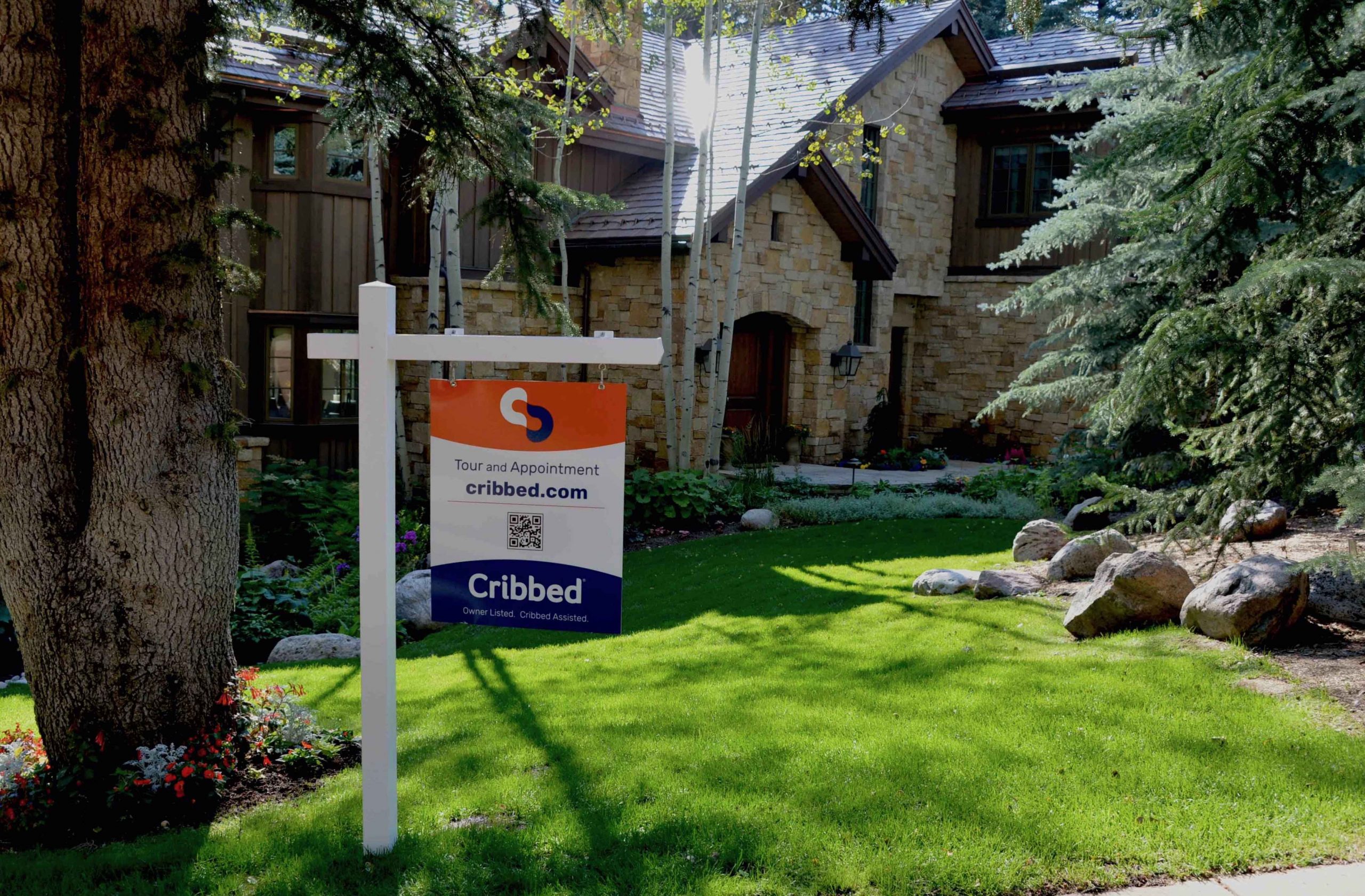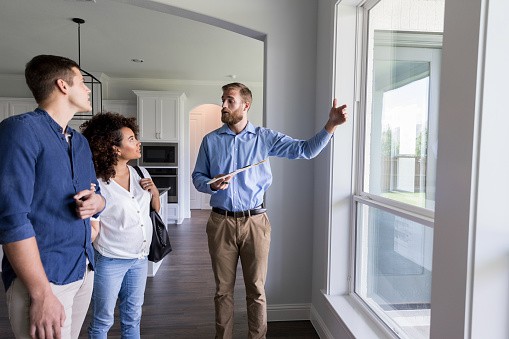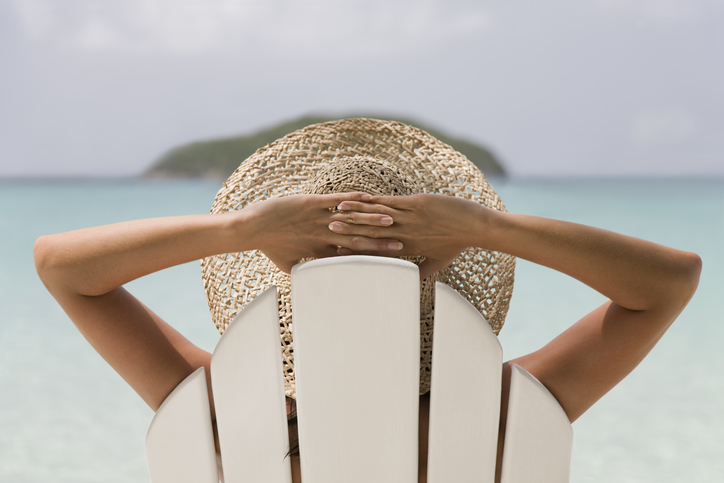CRIBBED, LLC
TERMS OF USE
Updated April 9, 2025
Welcome and thank you for your interest in Cribbed, the powerful way to buy and sell real estate without an agent. By accessing our website, mobile app, or other services offered by Cribbed, on www.cribbed.com, as a guest or through a registered user account, you (hereinafter "You" or "Seller" or "Buyer" as the case may be) agree to be bound by the following terms of use ("Terms of Use") and our privacy policy ("Privacy Policy") as updated and revised from time to time. Please read the Terms of Use and Privacy Policy carefully before you start using www.cribbed.com ("Cribbed.com" or the "Website"). These terms of use are entered into by and between You and Cribbed, LLC, and the following terms and conditions govern your access to and use of the Website, including any content, functionality, and services offered on or through the Website, whether as a guest or a registered user.
1. Fair Housing Commitment
Cribbed is fully committed to supporting and upholding the principles of the Fair Housing Act. We do not engage in or condone any business practices that discriminate based on race, color, religion, national origin, sex, familial status, or disability, except where explicitly permitted by law (e.g., age-restricted communities).
We encourage all sellers to adhere to fair housing practices and to take personal responsibility for avoiding discriminatory behavior. Cribbed does not display buyer photos until after a showing appointment is accepted, to reduce bias. Listing descriptions should focus on the property itself — not the people who might live there — except in lawful cases like 55+ communities.
2. Cribbed's Role
Cribbed, LLC ("We," the "Company," or "Cribbed") provides a self-service marketing platform — not licensed real estate brokerage. Our tools, tips, and materials are non-transaction-specific and offered for informational purposes only.
Users retain control of all pricing, offers, negotiations, and legal decisions. We strongly encourage consultation with licensed professionals.
We do not:
- Represent buyers or sellers.
- Negotiate contracts or inspection items.
- Buy, sell, lease, or rent property.
- List properties on the MLS.
- Receive any commission.
Our support includes marketing, administrative tools, and staging resources. Analytics are general and automated.
3. Access and Eligibility
3.a. Website Availability
We may withdraw or amend access at any time without notice. We are not liable for temporary outages or restrictions.
3.b. Registration and Age Limit
You must be 18+ and a U.S. resident to use Cribbed. All information you provide must be accurate and governed by our Privacy Policy.
3.c. Account Security
You’re responsible for your username and password. Notify us immediately of unauthorized access.
3.d. Mobile Use
Mobile data charges may apply. Mobile apps may update automatically. Open-source elements are governed by applicable licenses.
4. Accounts and Fees
4.a. Account Creation
You may choose to create a Cribbed account ("Account"), which grants you access to the Website. An active account is not required for some features such as accessing informational content or browsing listings. However, functions like messaging, booking appointments, submitting offers, and paying for services require an Account.
4.b. Payment Terms
By creating a listing on Cribbed.com, you agree to pay the fees associated with the service package you select at registration. You authorize Cribbed to charge your selected payment method for the full amount.
All listings remain active for six (6) months from publication. If your home does not sell within that time and you do not cancel your listing, it will automatically renew month-to-month at $50 per month until cancelled by you via your account dashboard or written notice.
You acknowledge and agree that Cribbed may continue to charge your payment method for renewals unless you cancel. No refunds are given for charges incurred after the initial term, unless required by law.
4.c. Deferred Payment Option
You may choose to defer part of your listing fee for up to six months or until closing — whichever comes first — only if First American Title or TitleVest is used as settlement agent.
A nonrefundable deposit is required upfront. The deferred portion is paid at closing via the title company. Deferred pricing is higher than upfront pricing and is disclosed clearly in the checkout process.
If you cancel before closing, your deferred balance becomes immediately due, and you authorize Cribbed to charge your payment method.
5. Property Listings and Responsibilities
5.a. Listing Content
You are solely responsible for all information, photos, videos, disclosures, and offers in your listing ("Seller Content"). Cribbed hosts your listing but does not verify its accuracy. You must ensure that all details — including description, legal disclosures, and marketing content — are truthful and accurate.
5.b. Pricing
You set the price of your home. Any pricing tools or guidance offered by Cribbed are non-specific and informational only.
5.c. Listing Updates
You must keep your listing updated. If the status or condition of your property changes, you must promptly update your listing content.
5.d. Signage and Installations
When you request signs, you are responsible for informing us of any gate codes, access limitations, hazards, sprinkler systems, or other relevant access issues. Failure to provide this information may result in additional fees for re-attempts.
5.e. Sign Responsibilities
Signs provided as part of your package are loaned and must be returned upon listing closure or cancellation. Lost or unreturned signs are subject to replacement fees:
- Sign Post: $200
- Sign Post and Panel: $250
- Sign Riders (each): $25
- Open House Directional Sign with Stake (each): $35
Any account holder who orders signage is responsible, even if not the seller.
6. Buyer Registration Encouragement
To maximize your experience and maintain full functionality within Cribbed.com, you should encourage any interested buyer who is not yet registered to create an account on the platform. This ensures that buyer communications, scheduling, and information tracking remain centralized and efficient within your listing dashboard.
7. Compliance with Local Laws, Customs, and Regulations
You are solely responsible for understanding and complying with all applicable federal, state, and local laws, customs, regulations, and ordinances that may impact the marketing, sale, or transfer of your property. This includes, but is not limited to:
- Attorney involvement in closings
- Transfer taxes
- Utility readings and payments
- Signage regulations
- Disclosure obligations
- Fair housing laws
Laws and requirements can vary significantly by state, city, or even neighborhood. If any materials, templates, or guidance provided by Cribbed conflict with applicable local rules or ordinances, you agree not to use them and to rely instead on guidance consistent with your local requirements.
8. Account Deactivation and No Refund Policy
8.a. Account Deactivation
You may deactivate your Cribbed account at any time by calling 833-856-2343 or emailing contact@cribbed.com.
8.b. Listing Cancellation
You may cancel your active listing at any time by clicking “Cancel Listing” within the Listing Builder dashboard or by contacting us directly via phone or email. If you wish to reinstate a cancelled listing, it may be subject to a reinstatement fee. If you selected a deferred payment option at signup, any remaining balance will become immediately due upon cancellation.
8.c. No Refund Policy
All account and listing fees are non-refundable, including in cases of account deactivation or listing cancellation, regardless of listing activity or outcome.
9. No Guarantee of Sale or Purchase
By using Cribbed, you acknowledge that you are not paying for results, and we make no guarantees that your property will sell or that you will successfully purchase a home.
The outcome of any real estate transaction depends on numerous factors — many of which are entirely within your control — including, but not limited to:
- Listing or purchase price
- Property condition and showing availability
- Market demand and timing
- Offer terms, contingencies, and financing
Cribbed provides access to best-in-class marketing tools and technology, but we do not represent you, negotiate on your behalf, or influence buyer or seller decisions. As such, the Company assumes no responsibility or liability for any actions taken or not taken by users in connection with our services or information available on the Website.
You are paying a flat fee for access to a professional platform designed to empower homeowners with marketing tools comparable to those used by top agents — without paying commission.
10. Platinum Buyers
Platinum Buyer badges are issued based on the good faith belief that the buyer’s self-reported information in the Cribbed platform — including pre-approval and proof of funds — is accurate and consistent with the supporting documentation uploaded.
However, Cribbed does not independently verify the authenticity or completeness of buyer-submitted financial documents. When receiving an offer, it is the seller’s sole responsibility to review and verify any proof of funds or pre-approval documentation to their own satisfaction before proceeding.
11. Prohibited Uses and Code of Conduct
11.a. General Use Restrictions
You agree to use Cribbed.com solely for lawful purposes and in accordance with these Terms of Use. You must not:
- Use the Website in any manner that violates any applicable federal, state, local, or international law or regulation.
- Engage in behavior that harms or attempts to harm Cribbed, its employees, affiliates, vendors, partners, or other users.
- Transmit, promote, or distribute unsolicited advertising, spam, pyramid schemes, chain letters, or any similar solicitation.
- Misrepresent your identity or affiliation with any person or entity, including impersonating Cribbed personnel or another user.
11.b. User Conduct and Content Standards
You agree not to post, upload, share, or otherwise make available any content (including listing descriptions, images, or communications) that is:
- False, fraudulent, misleading, or intentionally deceptive.
- Lewd, obscene, sexually explicit, profane, or otherwise inappropriate.
- Harassing, threatening, abusive, or intended to intimidate.
- Discriminatory, racist, sexist, or offensive based on any protected class.
- Rude, disrespectful, or hostile — including during appointments or open houses.
Cribbed may remove flagged or inappropriate content and suspend or revoke accounts without refund if violations or substantiated complaints occur.
11.c. Platform Integrity and Security
You also agree not to:
- Use bots, scrapers, or automated tools to access the Website.
- Introduce viruses, malware, or other harmful code.
- Attempt unauthorized access or disruption to the Website or related infrastructure.
Cribbed reserves the right to take legal or administrative action for any misuse of the platform.
12. Interactive Services and User Contributions
12.a. Interactive Services
The Website may include interactive features such as message boards, chat services, personal dashboards, forums, and algorithm tools (“Interactive Services”) that enable users to post, submit, publish, or transmit content or information (“User Contributions”).
12.b. Algorithm Tools
Cribbed may provide access to interactive algorithms to assist in real estate decision-making. These tools are for informational purposes only. Users are responsible for inputting accurate data and making their own decisions based on outputs.
12.c. Grant of Rights
By posting any User Contribution, you grant Cribbed and its affiliates a non-exclusive, transferable, sublicensable, royalty-free license to use, reproduce, modify, publish, and distribute such content for any lawful purpose.
12.d. Responsibility for Contributions
You represent and warrant that you own or control the rights to your content. You remain solely responsible for the legality, reliability, accuracy, and appropriateness of your User Contributions.
12.e. Enforcement and Monitoring
Cribbed reserves the right to remove any User Contribution at its sole discretion and to disclose your identity to law enforcement where appropriate. We may monitor activity but are not obligated to do so. We are not liable for content posted by you or others.
13. Content Standards
User Contributions must not:
- Be defamatory, obscene, harassing, or otherwise objectionable.
- Promote illegal or discriminatory conduct.
- Infringe on intellectual property or privacy rights.
- Contain deceptive or misleading information.
- Impersonate others or misrepresent affiliations.
- Violate any laws or encourage unlawful behavior.
You may not list property without the right to do so or claim false ownership or representation.
14. Reliance on Information Posted
All information on the Website is provided for general informational purposes only. We do not warrant the accuracy, completeness, or usefulness of this information. You rely on it at your own risk.
15. Third-Party Content and Links
The Website may include third-party content and external links. These do not reflect the views of Cribbed and we are not responsible for the accuracy or reliability of such content. Use at your own discretion.
15.a. Social Sharing
You may link to the Cribbed homepage or blog posts as long as it does not imply endorsement. Unauthorized framing or misuse may result in removal of linking permission.
15.b. Referrals and Commissions
Cribbed may earn commissions from service providers or third parties recommended on the Website. We do not control or assume responsibility for the services they offer.
16. Intellectual Property Rights
The Website and its entire content, features, and functionality (including but not limited to all information, software, text, images, video, audio, design, and layout) are owned by Cribbed or its licensors and protected by U.S. and international copyright, trademark, patent, and other intellectual property laws.
16.a. Permitted Use
You may use the Website for your personal, non-commercial use only. You must not reproduce, distribute, modify, publicly display, create derivative works from, or exploit any content without express written permission.
16.b. Restrictions
You may not:
- Remove or alter any copyright, trademark, or other proprietary rights notices.
- Use any illustrations, photos, videos, or graphics separately from accompanying text.
- Download, copy, or share any Website content for commercial purposes.
Cribbed retains all rights not expressly granted.
17. Trademarks
The name “Cribbed,” the Cribbed logo, and all related product and service names are trademarks of Cribbed or its affiliates. Unauthorized use is strictly prohibited.
18. No Warranties
Your use of the Website and any services or content is at your own risk. The Website is provided “as is” and “as available” with no warranties, express or implied. We disclaim all warranties including:
- Merchantability and fitness for a particular purpose
- Accuracy or completeness
- Availability or uninterrupted access
- Virus or error-free operation
We do not warrant that the Website or files downloaded from it are free of harmful code. You are responsible for maintaining data security and backups.
19. Limitation of Liability
To the fullest extent permitted by law, Cribbed and its affiliates will not be liable for any damages arising from use or inability to use the Website, including but not limited to:
- Loss of profits, revenue, or business
- Data loss
- Personal injury or property damage
- Emotional distress or reputational harm
This limitation applies regardless of the legal theory and even if Cribbed was advised of the possibility of such damages.
20. Changes to the Terms
We may revise these Terms of Use at any time. Continued use of the Website after changes are posted constitutes acceptance. Check this page periodically for updates.
21. Indemnification
You agree to indemnify and hold harmless Cribbed, its affiliates, and service providers from any claims, losses, or liabilities arising from your use of the Website, your User Contributions, or your violation of these Terms.
This includes:
- Injury or damage during showings or open houses
- Errors in listings or misrepresentations
- Unauthorized or unlawful activity
22. Buyer and Seller Responsibilities
Sellers:
- You are responsible for the accuracy of your listings.
- You accept all risks associated with showings, including injury or damage.
- You must comply with privacy laws and property disclosure obligations.
- You may block buyers in chat or report inappropriate behavior.
Buyers:
- You accept risks when entering homes.
- Cribbed does not verify listing accuracy; confirm all critical information independently.
- Be aware you may be recorded during visits.
- You may block sellers or report inappropriate behavior.
23. Fraud and Scam Awareness
Cribbed works to prevent fraudulent activity but cannot guarantee user conduct. Exercise caution:
- Never wire funds or accept overpayments.
- Confirm settlement arrangements through the title company.
- Redact sensitive financial info from uploads.
- Be cautious of poorly written messages or evasive users.
- Don’t act under pressure or promises that sound too good to be true.
Report scams to:
- Internet Fraud Complaint Center
- FTC at 877-382-4357
- Your local police
- Cribbed at support@cribbed.com
24. Governing Law and Jurisdiction
These Terms are governed by Illinois law. Any legal actions shall be brought in federal or state courts located in Chicago, Illinois. You waive all objections to this venue.
25. Arbitration
At our discretion, any disputes may be submitted to final and binding arbitration under the American Arbitration Association’s rules.
26. Limitation on Time to File Claims
Any claims must be filed within one (1) year of the event giving rise to the claim or be forever barred.
27. Waiver and Severability
Our failure to enforce any provision does not waive our right to enforce it later. If any provision is held invalid, the rest remain in effect.
28. Geographic Use
This Website is intended for users in the United States. Use outside the U.S. is at your own risk and may not comply with local laws.
29. Notice to California Residents
California users may contact the Department of Consumer Affairs at: 1625 N. Market Blvd., Suite S-202, Sacramento, CA 95834 or 800-952-5210.
30. Notice to Apple Users
Use of Cribbed on Apple devices is subject to Apple’s terms. Apple is not responsible for Cribbed’s services, support, or legal compliance. You represent that you are not located in a sanctioned country and are not a prohibited party under U.S. law.
31. Contact Information
Cribbed LLC
1312 17th St. #1079
Denver, CO 80202
833-856-2343
contact@cribbed.com
32. Assignment
Cribbed may assign its rights and obligations without your consent. You may not assign these Terms without our written approval.



















